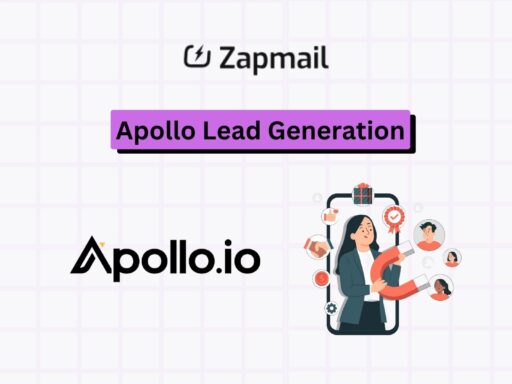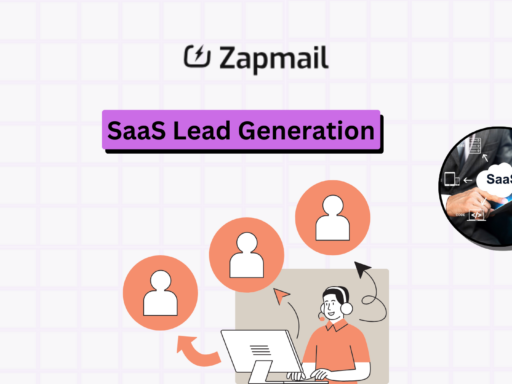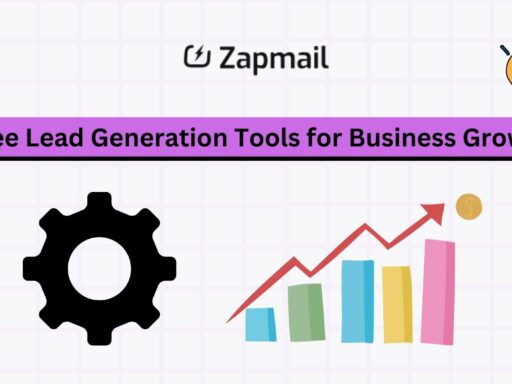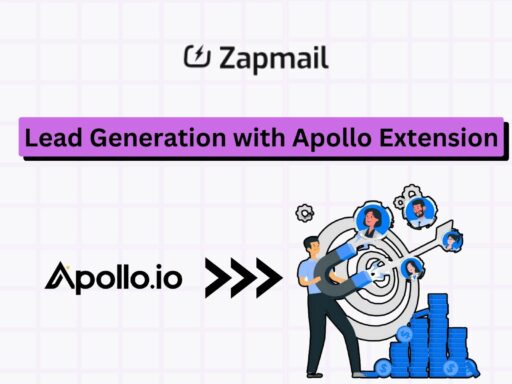In today’s business world, lead generation is key for growth and success. Yet, only 17% of marketers think they get enough leads for their sales teams. This shows how hard it is for businesses to attract and convert potential customers.
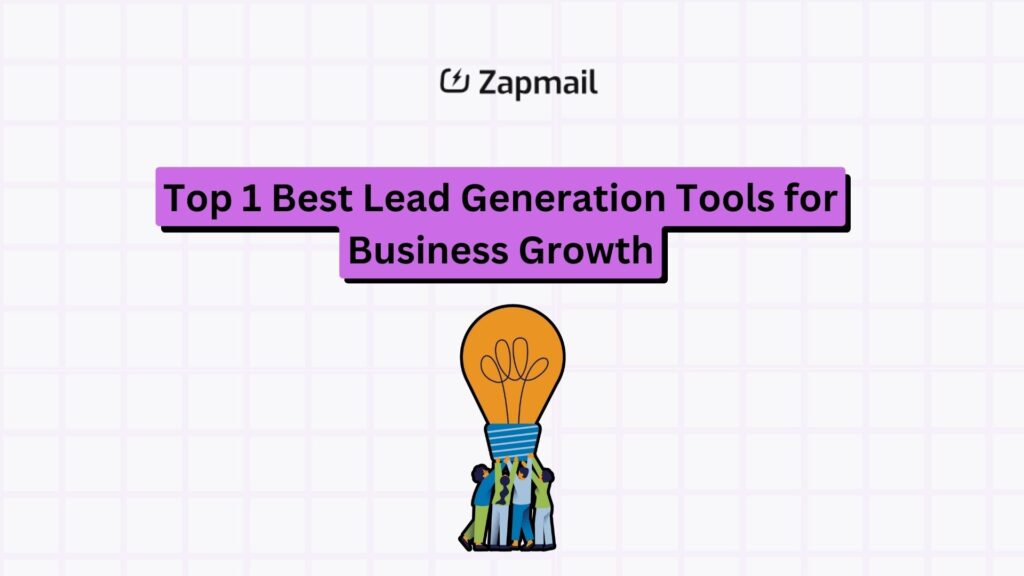
To tackle this challenge, businesses need the right lead generation tools. These tools automate the lead process, save time, and boost conversion rates. This drives business growth. In this article, we’ll look at the top 10 lead generation tools. They help find potential customers, get their contact info, and guide them through the sales funnel.
Key Takeaways
- Lead generation tools are essential for business growth, with only 17% of marketers believing they generate enough leads.
- These tools automate lead generation processes, save time, and increase conversion rates.
- The article explores ten powerful lead generation tools for identifying potential customers, gathering contact information, and nurturing leads.
- Businesses must consider factors like business goals, budget, integration capabilities, user-friendliness, data accuracy, and support when selecting lead generation tools.
- Integrating lead generation tools with platforms like LinkedIn, TikTok, Facebook, and Google can drive traffic and capture leads through various channels.
Understanding Lead Generation in Modern Business
In today’s world, lead generation is key for businesses wanting to grow and get more customers. It’s about drawing in potential buyers and getting their info. This info is then used to turn them into real customers. Lead generation keeps changing to meet the needs of businesses and their customers.
The Evolution of Lead Generation
Lead generation has changed a lot from old methods like cold calling and direct mail. Digital marketing has changed how businesses get leads. Now, inbound methods like content marketing and social media are more popular. Outbound methods, like email and ads, are now more focused and based on data.
Why Lead Generation Matters for Business Growth
Good lead generation is vital for business growth and making money. It helps businesses get more customers, sell more, and stay ahead. It also lets businesses know their audience better, helping them improve their marketing and sales.
Key Components of Successful Lead Generation
- Targeted and personalized marketing campaigns
- Engaging and informative content that addresses customer pain points
- Efficient lead capture and nurturing processes
- Seamless integration between marketing and sales teams
- Continuous optimization based on data-driven insights
By using these key parts, businesses can build a strong lead generation plan. This plan helps them grow and get more customers.
What Makes a Lead Generation Tool Effective
Effective lead generation tools are crucial for businesses looking to grow. They should match your company’s goals and work well with your current systems. It’s also important for them to be easy to use and keep data accurate.
Good lead generation tools have many features that fit your needs. These include making forms, automating emails, scoring leads, and segmenting them. These features help get quality leads, keep data right, and make nurturing leads easier.
- Integration with existing systems for a seamless workflow
- Intuitive user interfaces for easy adoption and usage
- Robust data accuracy and security measures
- Comprehensive customer support and troubleshooting resources
Choosing the right lead generation tool can really help your business grow. It’s about finding a tool that meets your specific needs and helps you reach your goals. This way, you can see a big improvement in getting and converting leads.
Types of Lead Generation Software Solutions
In today’s fast-paced business world, lead generation is key to growth and success. The market offers many lead generation software solutions to meet different needs. These tools fall into three main categories: inbound, outbound, and hybrid solutions.
Inbound Lead Generation Tools
Inbound tools attract and capture leads through content marketing. They include social media, email marketing, content tools, landing page builders, and SEO solutions. These tools help businesses grow their online presence, build relationships, and turn leads into customers.
Outbound Lead Generation Tools
Outbound tools help businesses actively find their target audience. They include sales intelligence, data enrichment, and sales automation tools. These solutions help manage the sales pipeline, engage prospects, and turn them into customers.
Hybrid Solutions
Hybrid solutions combine inbound and outbound approaches. They offer lead scoring, nurturing, and sales-marketing alignment. Examples include CRM platforms and marketing automation suites. These tools provide a complete solution for lead generation and management.
Knowing the different types of lead generation software helps businesses choose the right tools. The right software can greatly impact a company’s ability to attract and convert leads. This leads to sustainable business growth.
1. HubSpot: Complete CRM and Marketing Solution
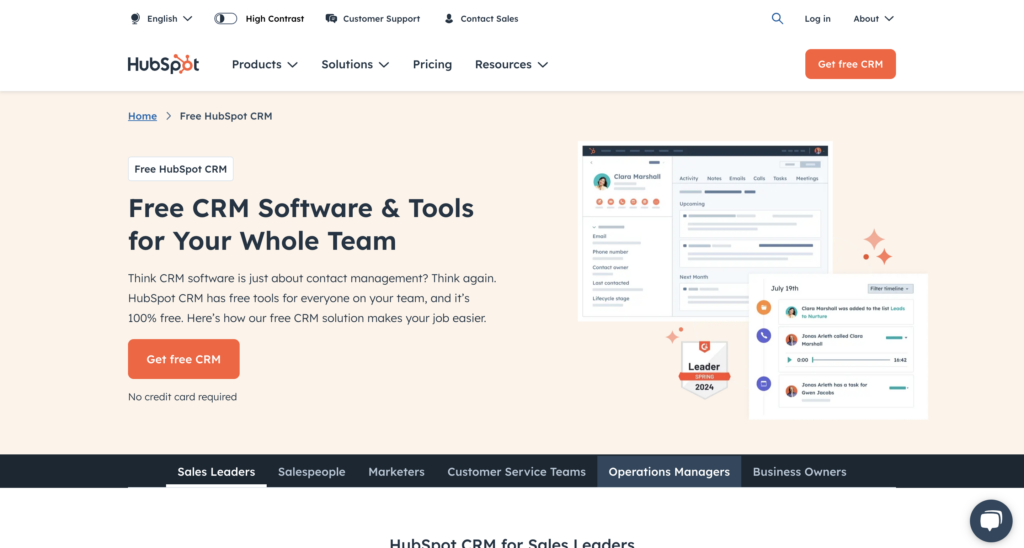
HubSpot is a top B2B sales and marketing tool with over 194,000 customers worldwide. It offers a full suite of features like a powerful CRM, marketing automation, and sales automation. It also provides detailed performance analytics.
HubSpot’s lead generation tools are especially effective. They include form-building tools and lead capture options. Plus, they integrate well with its marketing and CRM platforms.
HubSpot’s tools have helped many industries. For example, software companies have seen a 35% increase in qualified leads. Real estate businesses have enjoyed a 50% boost in conversion rates.
E-commerce has seen a 20% drop in customer acquisition costs. Meanwhile, manufacturing has improved lead response time by 25%.
Small businesses have also benefited from HubSpot. They’ve seen a 30% growth in website traffic in just six months. In healthcare, HubSpot’s CRM has improved lead nurturing by 40%.
Financial institutions have seen a 15% increase in customer retention. This is thanks to using HubSpot’s lead generation tools in their marketing.
HubSpot offers pricing from $45 to $3,600 per month. It’s a versatile solution for businesses of all sizes. It’s perfect for modern marketing and sales teams.
Best Lead Generation Tools for Small to Medium Businesses
Small to medium-sized businesses (SMBs) often struggle to find affordable yet effective lead generation tools. Luckily, there are many tools designed for SMBs. These tools offer various features to help businesses grow.
Cost-Effective Options
2. Zapier: The Ultimate Automation Tool for Lead Generation
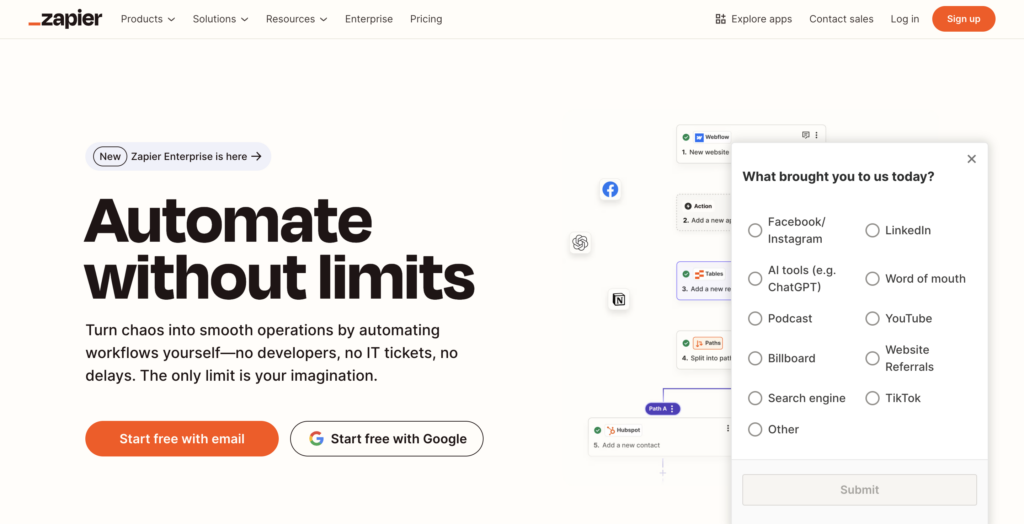
Zapier Interfaces is a great tool for SMBs. It lets businesses create custom forms to capture and follow up with leads. Zapier connects these forms to other apps, making it a cost-effective solution.
WordPress plugins like WPForms and Gravity Forms also help. They offer flexible form-building options for websites. This is perfect for SMBs with limited technical resources.
Scalability Features
- Podium’s AI boosts lead conversion by 45%, helping SMBs quickly engage with leads.
- Marketo has four pricing plans for SMBs, offering scalable solutions as businesses grow.
- Sumo’s heatmap function tracks user activity, helping SMBs optimize their lead generation.
Integration Capabilities
Integrating lead generation tools with other software is key for SMBs. Tools like HotJar and OptinMonster improve conversion rates and offer analytics. They work well with many platforms.
Wisepops and OptinMonster are also great choices for SMB lead generation. They have high customer ratings.
3. ZoomInfo: Advanced B2B Data Intelligence Platform
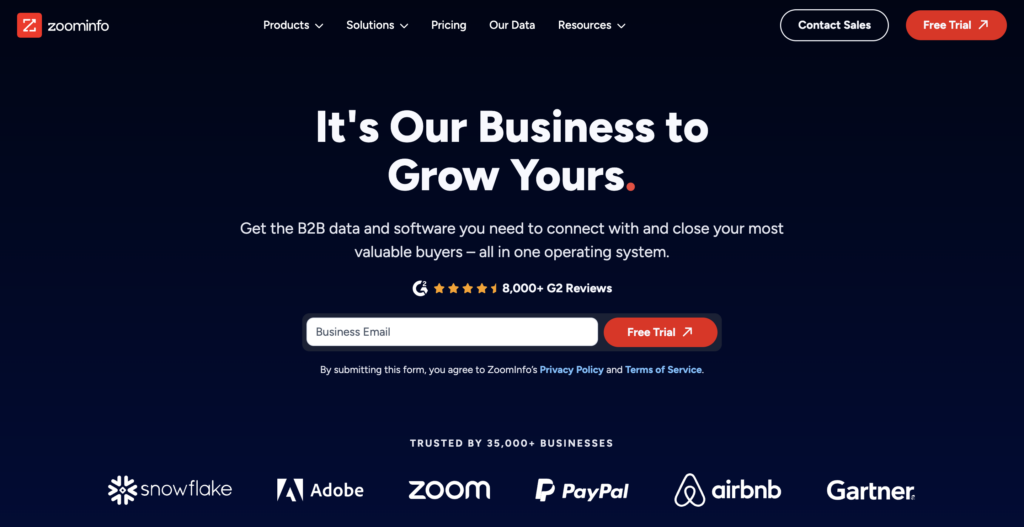
In today’s fast-paced business world, having the right B2B data is key. ZoomInfo is a top choice for businesses looking to grow. It offers detailed sales intelligence from a huge database of contact info and company profiles.
ZoomInfo is used by over 35,000 companies globally. It uses its vast B2B data to give real-time insights. This helps businesses spot demand for their products and services quickly.
The platform goes beyond just names and numbers. It gives deep insights into a prospect’s tech use, job role, and buying power. This info helps sales teams focus on the right accounts and craft better pitches.
ZoomInfo is all about keeping data fresh and accurate. This means sales and marketing teams can work more efficiently. It helps them set better goals and make more accurate forecasts.

Lead Generation Tools for Social Media Marketing
Social media platforms are now key tools for businesses to find new leads. Sites like LinkedIn, Facebook, and Instagram have special features. These make it easy to get high-quality leads right on social media.
LinkedIn’s Lead Gen Forms are a great example. They let users fill out forms quickly, making it easy for them to show interest. TikTok and Facebook also offer ways to get leads directly on their platforms.
Instagram has joined in too, with its lead ads feature. This lets businesses create eye-catching ads with a lead form. It makes it easy for users to show interest in what you offer.
The big advantage of these tools is how they use user data. They fill out forms with info like name and email. This makes it easier to get leads and can boost your conversion rates.
As social media keeps growing, we’ll see more ways to get leads. This will help businesses of all sizes reach and convert their audience better.
Unlocking the Power of Social Media Lead Generation
- LinkedIn Lead Gen Forms: Leverage the professional network to capture high-quality leads
- Facebook lead ads: Create visually engaging ads with seamless lead capture forms
- Instagram lead ads: Tap into the visual appeal of Instagram to generate leads
- TikTok Lead Generation: Capitalize on the growing popularity of the short-form video platform
4. OptinMonster: Converting Visitors into Leads
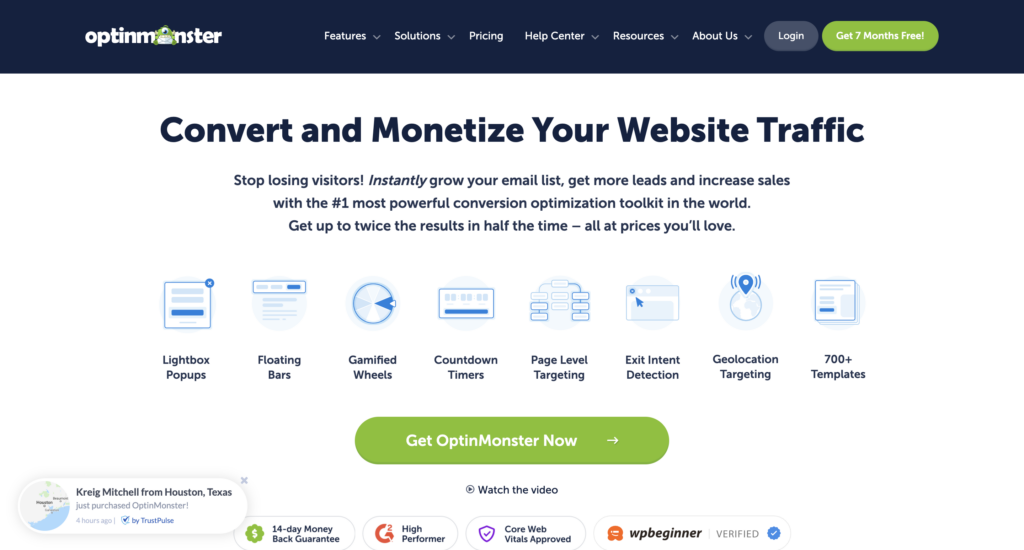
OptinMonster is a top choice for businesses wanting to turn visitors into leads. It offers many features to boost website conversion rates and improve user experience.
Form Building Features
OptinMonster makes it easy to create eye-catching lead capture forms. You can pick from over 50 templates and use a drag-and-drop tool. This way, you can design forms that match your brand and grab your audience’s attention.
You can place these forms anywhere on your website. This ensures they get seen and interacted with by more people.
Pop-up Campaign Options
OptinMonster’s exit-intent technology is a big plus. It launches pop-up campaigns when someone is leaving your site. These can include opt-in forms and special offers to keep potential leads from slipping away.
It also lets you target pop-ups based on specific pages, user actions, and where they are in the world. This makes your campaigns more effective.
A/B Testing Capabilities
OptinMonster also has strong A/B testing tools. These let you try out different form designs, copy, and calls-to-action. This way, you can find the best ways to turn visitors into leads.
By always improving your lead capture strategies, you can grow your business more effectively. OptinMonster’s tools and features are designed to help businesses of all sizes succeed in website conversion optimization and lead capture forms. Its easy-to-use interface and integration with email services make it a great choice for A/B testing and achieving success in lead generation.
Analytics and Tracking Tools for Lead Generation
In the world of lead generation, analytics and tracking tools are key. They give deep insights into web traffic, conversion data, and marketing attribution. These are crucial for improving your lead generation strategies.
Matomo (formerly Piwik) is a top tool for analytics. It tracks visitor behavior, records session recordings, and conducts A/B testing. It also creates heatmaps while respecting user privacy. This helps businesses understand their audience better and make informed decisions.
CallTrackingMetrics is another great tool, focusing on call tracking and attribution. It helps businesses see which marketing campaigns are driving leads and sales. This way, they can spend their marketing budget more wisely.
For a complete view of your lead generation, tools like lead analytics, conversion tracking, and marketing attribution software are essential. They offer a single place to watch key metrics and track the customer journey. This helps find the best ways to generate leads and convert them.
- Ruler Analytics: Offers in-depth analytics and attribution, with pricing starting at £199 per month.
- Act-On: Provides a range of marketing automation features, including lead scoring and nurturing, with plans starting from $900 per month.
- ActiveIQ: A comprehensive analytics platform that requires a custom quote for pricing.
Using these analytics and tracking tools, businesses can understand their lead generation better. They can then improve their strategies and grow sustainably.
5. Intercom: Conversational Lead Generation
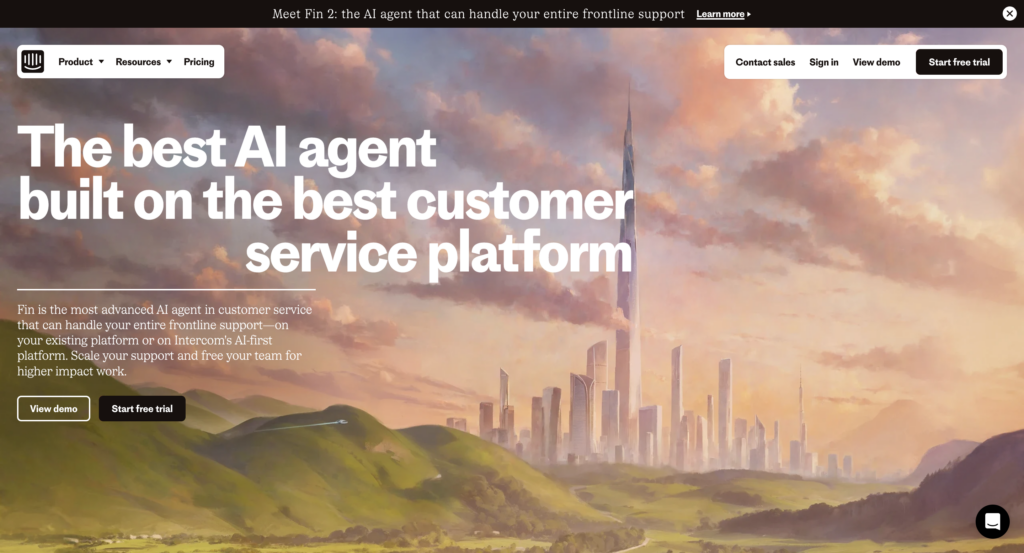
In the fast-paced world of lead generation, Intercom stands out. It’s a top choice for live chat and conversational marketing. Over 25,000 customers worldwide use Intercom to catch leads in live chats.
Intercom does more than just live chat. It has chatbots that automate talking to leads and handing them off to sales teams. This makes capturing leads easier and more efficient.
One big plus of Intercom is how well it works with other tools. It helps businesses manage their lead generation in one place. With features like lead routing and analytics, Intercom boosts lead capture and business growth.
For companies looking to improve live chat lead generation, chatbots, and customer communication, Intercom is a great option. Its easy-to-use design, automation, and integration make it a top pick in the lead generation world.
Email Marketing Tools for Lead Nurturing
Email marketing tools are key in lead generation. They help nurture prospects and guide them through the sales funnel. Platforms like Benchmark and Mailchimp offer features for effective newsletter campaigns and automated drip emails. This boosts lead nurturing efforts.
Automation Features
Email marketing automation tools let businesses send personalized messages at the right time. This keeps leads engaged and interested in the brand, even as they move through the sales process.
Personalization Options
Personalized email campaigns are more effective in driving engagement and conversions. Tools often allow customization of content, subject lines, and calls-to-action. This is based on the recipient’s behavior, preferences, and stage in the buyer’s journey.
Campaign Management
Email marketing platforms offer comprehensive campaign management. This lets businesses track lead nurturing efforts, analyze user engagement, and make data-driven decisions. It ensures the right messages reach the right leads at the right time.

Using email marketing automation, personalization, and campaign management helps businesses nurture leads. It guides them towards making a purchase, driving business growth. This is achieved through email marketing automation, lead nurturing, and personalized campaigns.
Integration Capabilities and API Access
Seamless integration and API access are key for a smooth lead generation workflow. Platforms like Zapier help connect different tools, automating tasks and ensuring data flows well. Many software solutions also integrate with popular CRM systems and marketing tools, making lead management better.
API access lets businesses tailor their lead generation, link data across systems, and automate tasks. This flexibility boosts your lead generation’s efficiency and success. With API integrations, you can manage all lead activities in one place, making data and lead follow-up easier.
- Leverage lead generation integrations to connect your tools and automate workflows
- Explore API access to customize and optimize your lead generation processes
- Ensure seamless data flow and centralized management of your lead generation activities
Effective integration and API access are vital for businesses aiming to improve lead generation. By using these features, you can build a strong system of tools and systems. This system will help drive growth and meet your business goals.
Security and Data Privacy Considerations
Businesses use lead generation tools to grow. It’s key to focus on data privacy and security. Following strict rules like GDPR is vital to keep customer trust and avoid legal trouble. When picking lead generation software, look for features that protect data well.
Top tools like Matomo put user privacy first and follow data protection rules. They use strong encryption, safe data storage, and follow all compliance rules. Choosing lead generation solutions that value data privacy shows a business’s commitment to ethical and responsible data handling.
- Encryption and Secure Storage: Lead generation tools must use strong encryption and safe data storage to stop unauthorized access and data breaches.
- Compliance with Regulations: Businesses should pick tools that follow data protection laws, like GDPR. This ensures they can work legally and keep customer trust.
- Transparency and Consent Management: Lead generation tools should clearly share data collection and processing info. They should also get clear consent from users to build trust and transparency.
- Vendor Due Diligence: When using third-party lead generation tools, businesses must check the vendors’ data privacy and security practices. This ensures they meet high standards.
By focusing on data privacy and security, businesses can stay compliant and build stronger customer relationships. In today’s world, where data is more important than ever, these steps are essential for a reliable and successful lead generation program.
ROI Assessment of Lead Generation Tools
For businesses, checking the return on investment (ROI) of lead generation tools is key. They look at lead quality, conversion rates, cost per lead, and customer lifetime value. Many tools come with analytics and reports to help measure success and improve strategies.
Picreel works with over 700 apps, showing it’s very compatible. AeroLeads finds contact info on sites like LinkedIn and CrunchBase. BIGContacts is great for small to mid-sized businesses, helping manage leads and customers well.
Getting the right audience and using smart strategies boosts customer lifetime value and ROI. To figure out lead generation ROI, you divide revenue by campaign costs. Predictive modeling uses past data to forecast future ROI.
Looking at customer lifetime value gives a full picture of lead generation success. Conversion rates and cost per lead are key to measuring success. Better sales efficiency comes from training, stronger criteria, and personalized follow-ups.
Quality leads are more likely to convert, making it crucial to target the right audience. Shortening sales cycles and lead times can lower costs and boost ROI. Market dynamics, like competition, affect lead generation success.
Improving lead generation success and ROI comes from audience profiling and page optimization. Investing in high ROI channels based on analytics insights can lead to better results. Marketing automation and CRM tools help track leads, automate processes, and integrate data for better ROI measurement.
Conclusion
Effective lead generation is key to business growth today. Using the best lead generation tools helps businesses get, grow, and convert leads into loyal customers. Tools like HubSpot and OptinMonster help with inbound marketing. Tools like Intercom and Mailshake are great for outbound efforts.
Every business, big or small, can find the right lead generation tools. Look for tools that fit your budget and needs. Tools that offer analytics help you improve your lead generation over time.
Success in business growth depends on getting and nurturing quality leads. Using the best tools and strategies makes marketing easier and more productive. It helps you close more deals and connect better with your audience. With the right technology and strategy, your business can grow sustainably.
FAQ
Good lead generation tools match your business goals. They should work well with your current systems. They must be easy to use and keep your data safe.
Look for tools that help you build forms, automate emails, score leads, and segment your audience.
There are many types of lead generation software. You can find tools for social media, email marketing, content, landing pages, SEO, webinars, and sales intelligence.
These tools can be inbound, outbound, or a mix. Each type helps with different parts of getting leads.
Small to medium businesses can save money with lead generation tools. Tools like Zapier help you create custom forms and connect with other apps.
WordPress plugins like WPForms and Gravity Forms make it easy to add forms to your website.
Social media platforms have great lead generation tools. LinkedIn, TikTok, Facebook, and Instagram let you get leads right in their apps.
These tools often fill out forms for you, making it easy for people to give you their info.
Analytics tools like Matomo give you deep insights into your website. They track visitors, record sessions, test different versions, and show heatmaps.
These tools help you understand your audience while keeping their privacy safe. This is key for improving your lead generation.
